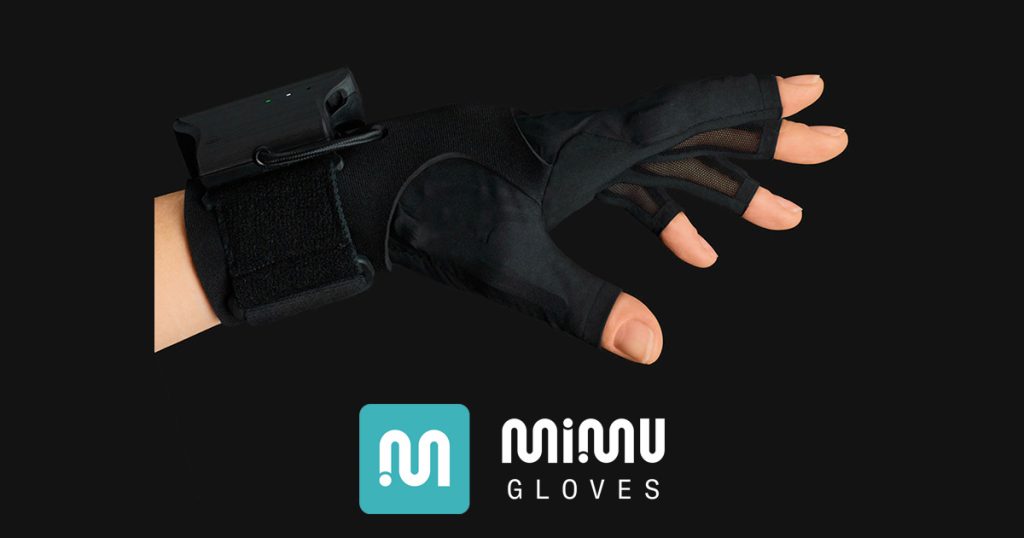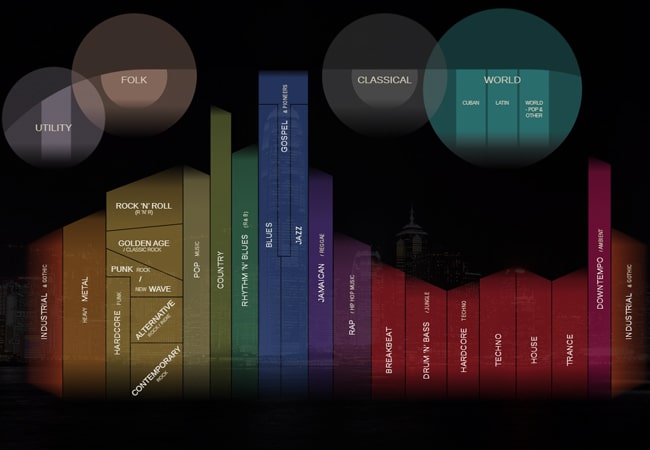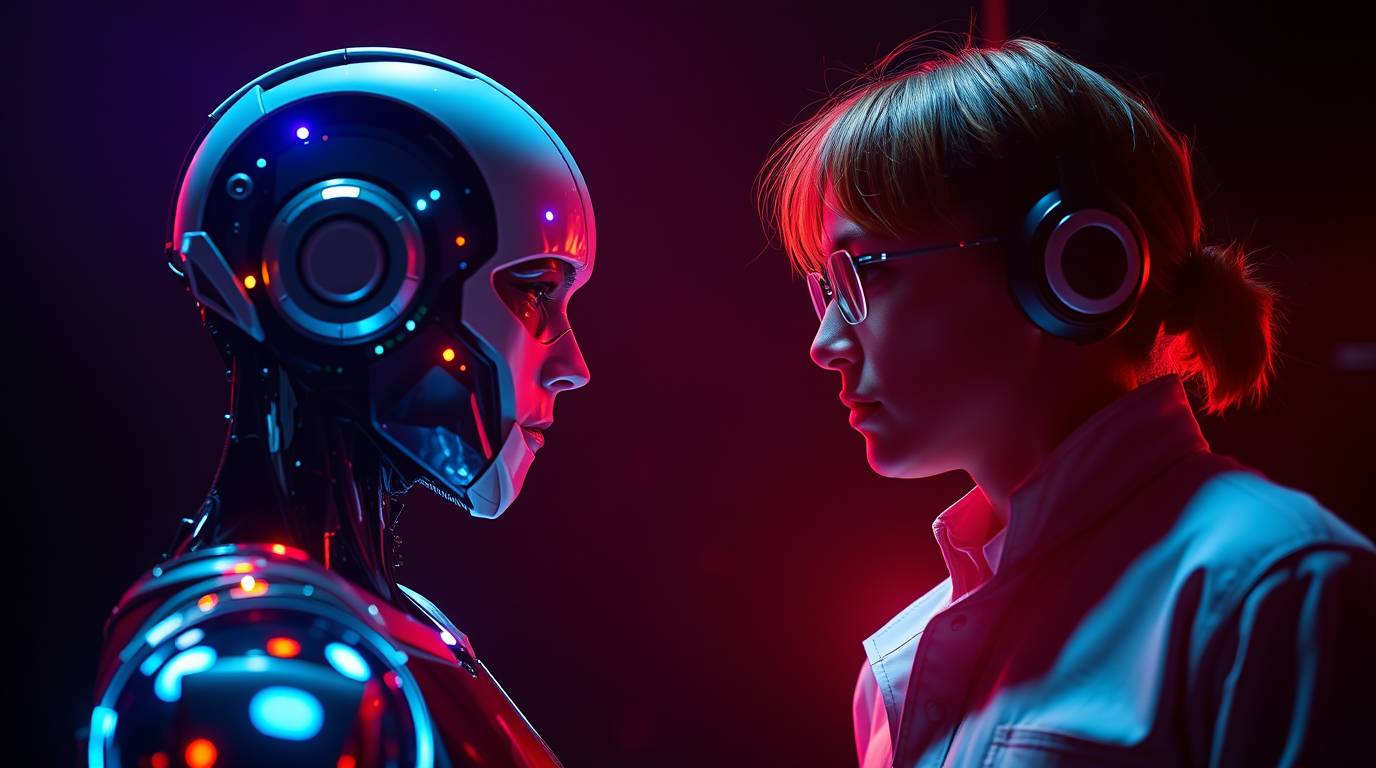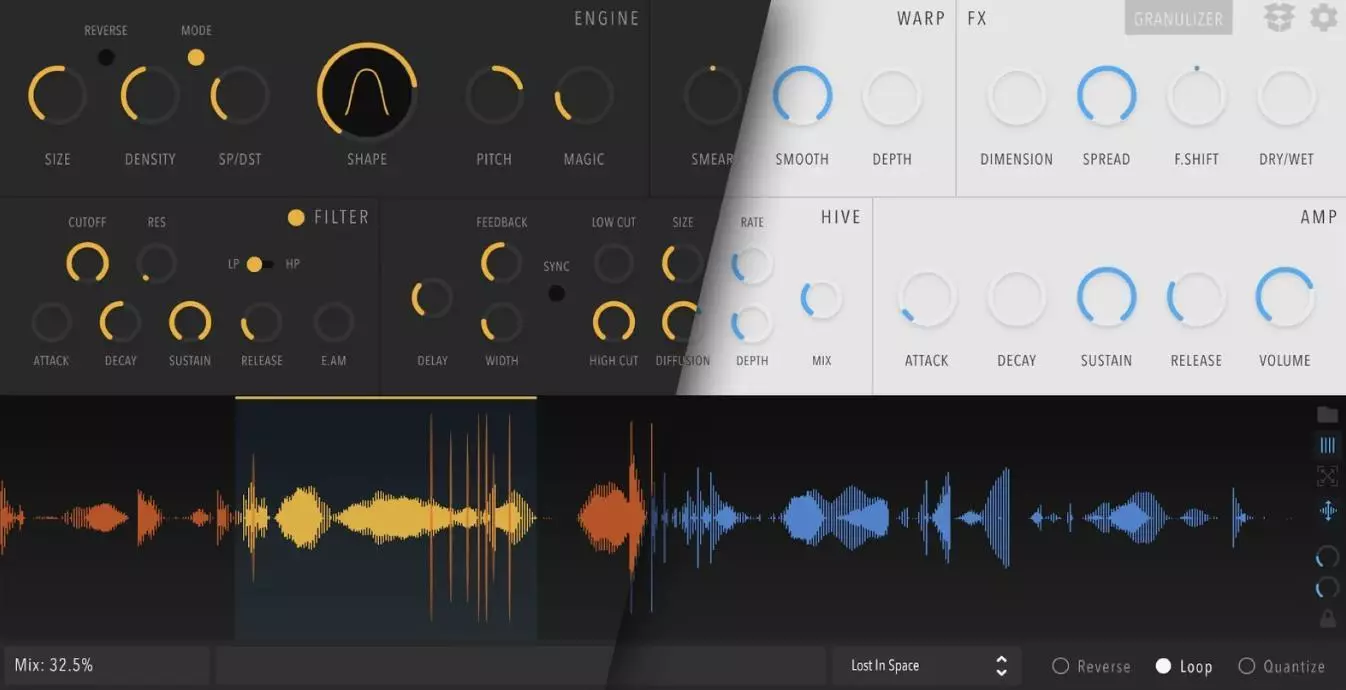Mi.Mu Gloves are a wearable musical instrument designed to allow musicians to control sound and music through hand and finger gestures. The gloves were invented by British musician Imogen Heap and her team. The concept of Mi.Mu Gloves emerged in 2010 when Heap sought a way to break free from traditional instruments and use her own body as an interface for controlling sound. The primary goal of their development was to create an innovative approach to interacting with music technology during live performances and composition, as well as to enhance the intuitiveness of music production.
Technology and Anatomy of the Gloves
Mi.Mu Gloves represent a complex combination of textiles and electronics. The textile part is optimized for musical performance, made from thin, elastic, breathable materials that are also washable, with open fingertips and palm areas. This design allows unrestricted and easy use of other instruments, trackpads, keyboards, and touchscreens.
The gloves are equipped with a set of sensors that track hand movements, finger gestures, and hand positions. These movements are translated into MIDI signals, enabling real-time control over various sound parameters. The system works wirelessly, transmitting signals via Wi-Fi to music software such as Logic Pro, Ableton Live, or custom-designed applications.
Detailed Analysis of Sensor Inputs
Mi.Mu Gloves utilize data from two main types of sensors: Flex Sensors and Inertial Measurement Units (IMU).
1. Flex Sensors:
- Each glove contains eight flex sensors measuring finger bends.
- The thumb and pinky each have one sensor, while the other fingers have two.
- For fingers with two sensors, the one closer to the fingertip is called distal, and the one closer to the wrist is called proximal.
- These sensors provide two types of inputs: Individual Finger Bends (8 separate sensors) and Average Bend (overall bending of all fingers).
- Flex data also serves for Posture Recognition. Glover, specialized software, uses machine learning to allow users to train up to nine positions, which then function as event inputs.
2. Inertial Measurement Unit (IMU):
- This chip, located in a plastic casing on the wrist, measures glove movements and orientation. The IMU can also detect sharp motions called “drum hits”.
- Orientation (Movement Inputs): Continuous orientation movements include three components:
- Pitch: Vertical hand movement, measured from wrist angle (fingers pointing down to fingers pointing up).
- Yaw: Horizontal hand movement, left to right.
- Roll: Rotational wrist movement, from palm up to palm down.
- Direction (Event Inputs): Continuous orientation movements are divided into six directions (Forward, Backward, Left, Right, Up, Down) that can act as event inputs.
- Drum Hits: Measure peaks of rapid movements along three types:
- Drum Hit: Quick lateral wrist motion (like a karate chop).
- Slap: Upward or downward flat-hand strike (like a hand drum).
- Wrist Flick: Quick wrist rotation, similar to finger snapping.
- Palm Tilt: Four directions of palm tilt, measured relative to the forearm, not absolute forward orientation.
3. Button:
- Each glove has a single button located on the side of the index finger between two main joints.
- The button can be assigned to any MIDI or OSC message. Glover distinguishes between “Button Down” (press) and “Button Up” (release), allowing precise control.
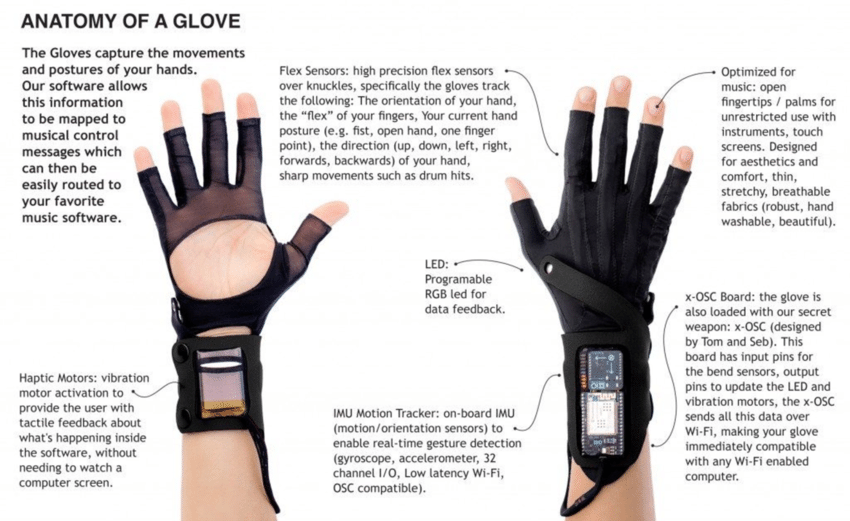
Feedback System (Outputs)
To reduce the need to look at a computer screen, the gloves include visual and haptic feedback systems.
- LEDs: Programmable LEDs on each glove can indicate software changes or provide positional feedback through color changes or blinking (e.g., orange for bass, yellow for drum mode).
- Vibration Motor: Located on the back of the hand, it provides haptic feedback. Users can program it via Glover, e.g., to vibrate when the user “points forward.”
Software Ecosystem
The core of glove functionality is the Glover software:
- Glover: Specialized software for composing and performing music through movement, connecting to third-party music software. Glover maps movements and gestures to MIDI/OSC, allowing users to develop their own expressive musical language.
- Integration: Glover supports not only Mi.Mu Gloves but also other motion controllers such as Leap Motion, Genki Wave, micro:bit, and the free app Gliss.
- Gliss: A free iOS app that turns a phone into a motion-based controller, using internal sensors and connecting wirelessly to Glover.
Additional plugins expand system capabilities: The Jellyfish (granular synthesis engine) and Kuiper (granular delay with five separate transposition channels).
Reception and Impact
Mi.Mu Gloves have received positive recognition for their innovative approach. They gained attention for enhancing intuitiveness and accessibility in music production, especially during live performances, allowing for a new level of expressiveness. Imogen Heap demonstrated their potential to transform traditional performance methods in various live settings.
Although not originally designed for musicians with disabilities, they became key for accessibility. For instance, guitarist Chris Halpin, who began losing hand strength due to cerebral palsy, was able to resume touring using the gloves to virtually “pluck strings and hit drums.” This technology enables musicians with physical limitations to engage in creative work again.
However, Mi.Mu Gloves remain an expensive instrument; a pair costs £5,000, often requiring grants or private donations. It is important to note that the gloves are not a “magic device”: they require practice and skill, and using them is not simply a matter of “putting on the gloves and waving your hands.”
For a comparison with other innovative instruments, see ROLI Seaboard.
